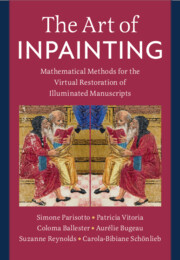Refine search
Actions for selected content:
3 results

The Art of Inpainting
- Mathematical Methods for the Virtual Restoration of Illuminated Manuscripts
-
- Published online:
- 22 May 2025
- Print publication:
- 22 May 2025
2 - Non-finiteness in the Literature
-
- Book:
- Non-Finiteness
- Published online:
- 21 April 2022
- Print publication:
- 28 April 2022, pp 9-67
-
- Chapter
- Export citation
6 - Imagination in Classical India: A Short Introduction
- from Part I - Theoretical Perspectives on the Imagination
-
-
- Book:
- The Cambridge Handbook of the Imagination
- Published online:
- 26 May 2020
- Print publication:
- 18 June 2020, pp 80-93
-
- Chapter
- Export citation
